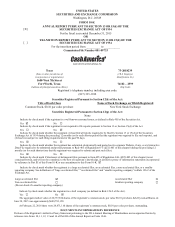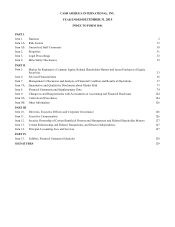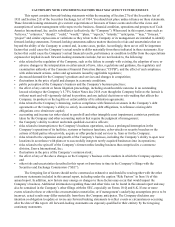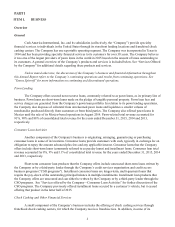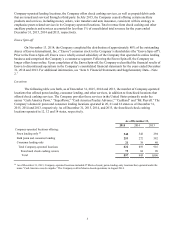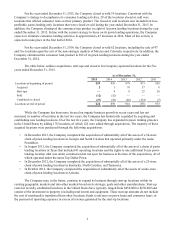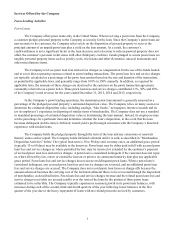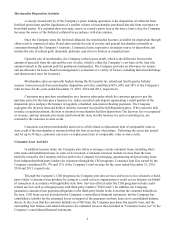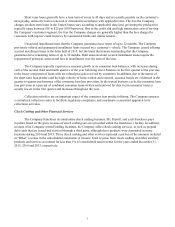Cash America 2015 Annual Report Download - page 10
Download and view the complete annual report
Please find page 10 of the 2015 Cash America annual report below. You can navigate through the pages in the report by either clicking on the pages listed below, or by using the keyword search tool below to find specific information within the annual report.
Merchandise Disposition Activities
A closely related activity of the Company’s pawn lending operations is the disposition of collateral from
forfeited pawn loans and the liquidation of a smaller volume of merchandise purchased directly from customers or
from third parties. If a customer does not repay, renew or extend a pawn loan at the time a loan is due, the Company
becomes the owner of the forfeited collateral in accordance with state statutes.
Once the Company owns the forfeited collateral, the merchandise becomes available for disposition through
either retail or commercial sales. Retail sales include the sale of jewelry and general merchandise primarily to
consumers through the Company’s locations. Commercial sales represent a secondary source of disposition and
include the sale of refined gold, diamonds, platinum, and silver to brokers or manufacturers.
Upon the sale of merchandise, the Company realizes gross profit, which is the difference between the
amount of proceeds from the sale and the cost of sales, which is either the Company’s cost basis in the loan (the
amount loaned) or the amount paid for purchased merchandise. The Company provides an allowance for returns
and an allowance for losses based on management’s evaluation of a variety of factors, including historical shrinkage
and obsolescence rates for inventory.
Merchandise sales are typically highest during the first quarter tax refund and fourth quarter holiday
seasons. Gross proceeds from merchandise disposition activities contributed 60%, 60% and 58% of the Company’s
total revenue for the years ended December 31, 2015, 2014 and 2013, respectively.
Customers may purchase merchandise on a layaway plan under which the customer agrees to pay the
purchase price for the item plus a layaway fee, makes an initial cash deposit representing a small portion of the
disposition price and pays the balance in regularly-scheduled, non-interest-bearing payments. The Company
segregates the layaway item and holds it until the customer has paid the full disposition price. If the customer fails
to make a required payment, the item is returned to merchandise held for disposition. The layaway fee is recognized
as revenue, and any amounts previously paid toward the item, less the layaway fee and a restocking fee, are
returned to the customer as store credit.
Customers can return merchandise and receive a full refund, a replacement item of comparable value or
store credit if the merchandise is returned within the first seven days of purchase. Following the seven-day period
and for up to 30 days, customers can receive a replacement item of comparable value or store credit.
Consumer Loan Activities
In addition to pawn loans, the Company also offers or arranges certain consumer loans, including short-
term loans and installment loans, in some of its locations. Consumer loan fees include revenue from the loan
portfolio owned by the Company and fees paid to the Company for arranging, guaranteeing and processing loans
from independent third-party lenders for customers through the CSO programs. Consumer loan fees earned by the
Company contributed 8%, 9% and 11% of the Company’s total revenue for the years ended December 31, 2015,
2014 and 2013, respectively.
Through the Company’s CSO programs, the Company provides services and receives fees related to a third-
party lender’s consumer loan products by acting as a credit services organization or credit access business on behalf
of consumers in accordance with applicable state laws. Services offered under the CSO programs include credit-
related services such as arranging loans with third-party lenders (“CSO loans”). In addition, the Company
guarantees consumer loan payment obligations to the third-party lender in the event that the customer defaults on
the loan. CSO loans are not included in the Company’s consolidated financial statements, but the Company has
established a liability for the estimated losses in support of the guarantee on these loans in its consolidated balance
sheets. In the event that the customer defaults on a CSO loan, the Company purchases the specific loan, and the
outstanding loan balance and related allowance for estimated losses is then included in “Consumer loans, net” in the
Company’s consolidated financial statements.
6



